Politics
Invercargill Prison Continues Dry Cell Use for At-Risk Inmates
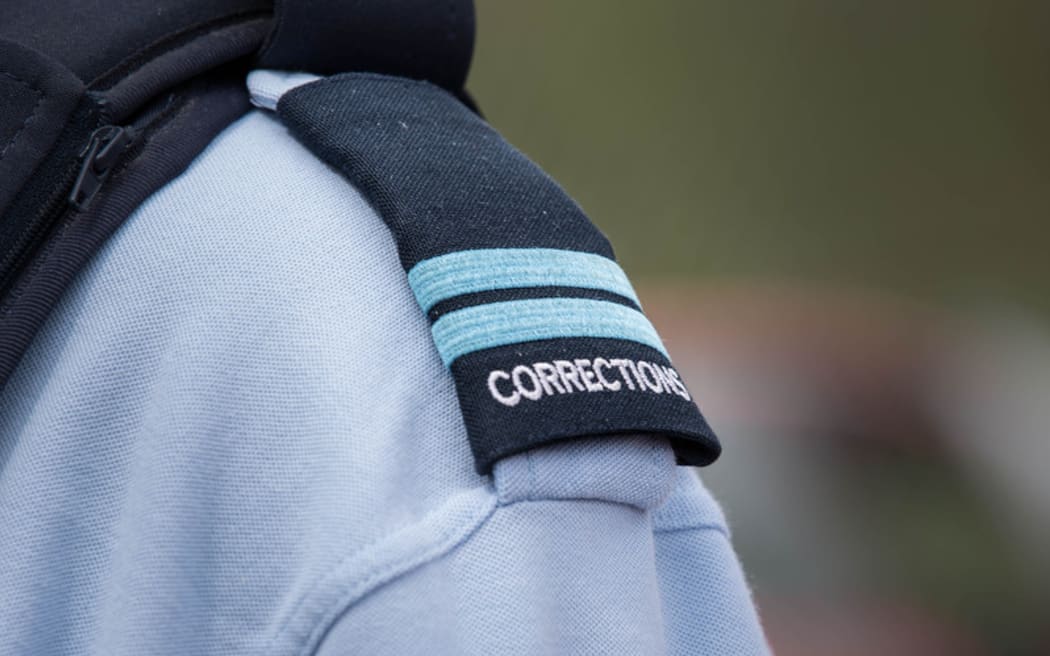
Corrections New Zealand continues to house at-risk prisoners in dry cells at Invercargill Prison, despite previous admonitions regarding this practice. This approach has raised significant human rights concerns, particularly regarding the dignity and safety of vulnerable inmates. Data obtained under the Official Information Act reveals that inmates identified as at-risk have been placed in these conditions on at least 14 occasions since 2019.
Dry cells, situated in the prison’s Intervention and Support Unit (ISU), lack basic amenities such as toilets and drinking water. Originally intended for monitoring inmates suspected of concealing contraband, these cells have become a controversial aspect of prison management for at-risk individuals. According to Corrections, the safer cells—equipped to provide better conditions—were fully occupied during 13 of the 14 placements in dry cells, particularly in 2023.
Neil Beales, Deputy Commissioner for Men’s Prisons, indicated that staff face challenging decisions when accommodating these inmates. “We still have a responsibility to make sure that that person is properly looked after,” he stated, highlighting the absence of ligature points in safer cells as a key factor in their placement decisions. Beales acknowledged that the use of dry cells is not optimal but described the situation as unavoidable.
Concerns Raised by Multiple Oversight Bodies
The practice of placing at-risk prisoners in dry cells has drawn sharp criticism from various watchdog organizations. In a 2019 visit, then-Chief Ombudsman Peter Boshier found that the conditions violated United Nations standards designed to uphold prisoner dignity. He reported that inmates had been given cardboard containers instead of proper toilets, which contravened Rule 15 of the UN Standard Minimum Rules for the Treatment of Prisoners.
In subsequent years, Boshier reiterated his concerns regarding the use of dry cells for at-risk inmates at other facilities, including Christchurch Men’s Prison and Whanganui Prison. He referred to dry cells as “a desolate and barren environment for prisoners who are already vulnerable,” asserting that such practices are never appropriate.
In 2023, the Office of the Inspectorate echoed these warnings. Chief Inspector of Corrections Janis Adair noted in her report that dry cells were being misused due to a lack of available at-risk cells, emphasizing that such restrictive environments are particularly unsuitable for vulnerable inmates.
Advocacy Groups Demand Accountability
Advocacy organizations have labeled the continued use of dry cells for at-risk prisoners as “inhumane” and “appalling.” Lisa Woods, Advocacy and Movement Building Director at Amnesty International New Zealand, expressed deep concern over the ongoing practice. “People being placed in such conditions, especially after the Ombudsman has made it clear it goes against international human rights standards, is beyond appalling,” she remarked. Woods underscored the need for accountability, stating that the rights of individuals in the criminal justice system must be respected.
Similarly, Cosmo Jeffery from the Howard League for Penal Reform criticized the lack of action to eliminate the use of dry cells for at-risk prisoners, claiming that no substantial resolution has been put in place despite ongoing advocacy.
Challenges in Prison Management
Since 2019, the inmate population at Invercargill Prison has fluctuated between 110 and 182, with an increasing number of new arrivals presenting significant mental health, drug, and alcohol issues. Beales acknowledged that staff are doing everything they can to avoid using dry cells but indicated that the lack of alternative safe accommodations complicates matters. He mentioned that relocating inmates could pose additional risks and that staff must make decisions prioritizing safety.
When questioned about the lack of additional safer cells in the ISU, Beales explained that given the prison’s infrastructure and age, resources have been allocated to other areas within the network. Recently, Corrections opened 500 new high-security beds at Waikeria Prison and added 96 dedicated mental health and addiction beds to alleviate pressure on the overall system.
As the situation develops, the continued use of dry cells for at-risk prisoners at Invercargill Prison remains contingent on available capacity and resources, raising ongoing concerns about the treatment of vulnerable individuals within the justice system.
Politics
Tasman Town Plans Home for Historic Anaweka Waka Discovery
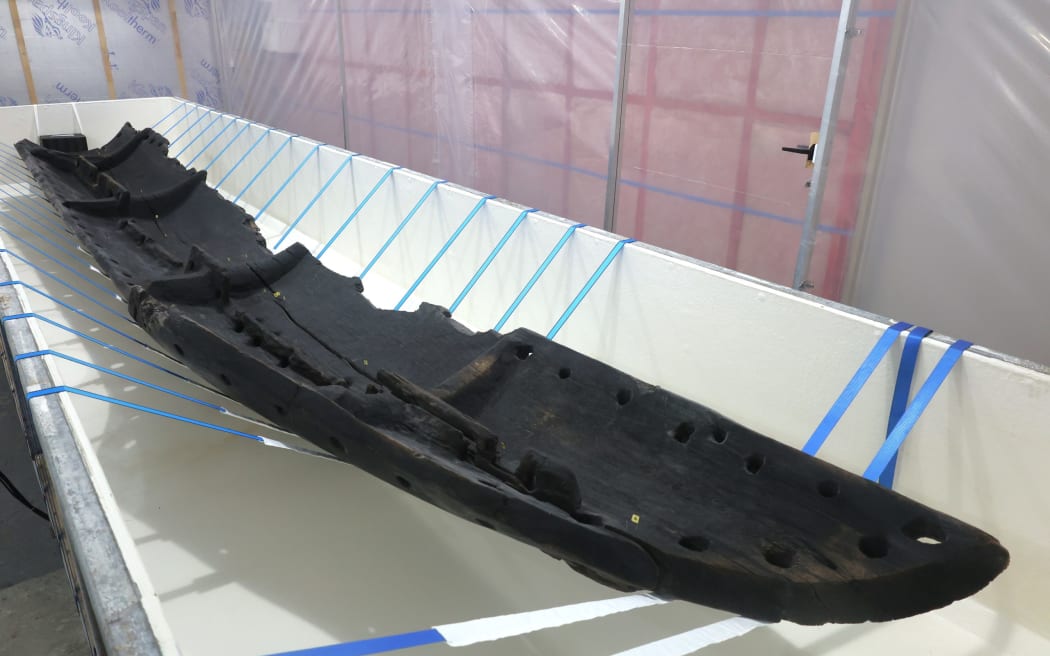
Planning is underway to establish a dedicated facility for the historic Anaweka waka in the Tasman town of Golden Bay. This initiative follows the discovery of the 700-year-old waka, considered New Zealand’s “most significant archaeological find,” by a family during a picnic 13 years ago. The artefact, a 6-metre fragment of what was once a longer, double-hulled ocean-going vessel, has been preserved in a polyethylene glycol solution until it finishes drying later this year.
The local iwi, comprising Te Ātiawa, Ngāti Rārua, Ngāti Tama, and Ngāti Kuia, have collaborated on a plan to construct a purpose-built wharewaka adjacent to the Golden Bay Museum, located at the intersection of Commercial and Reilly Streets. This site, currently occupied by Pioneer Park, is already designated for museum purposes, and the Tasman District Council has provisionally approved the location, pending community consultation.
Butch Little, chair of the Ngāti Tama ki Te Waipounamu Trust, emphasized the importance of collaboration among local stakeholders, including the council and local whānau. “There has to be a consultation process with the community, but then we can start looking at funding, because it will be significant,” he stated. Little envisions the wharewaka not only as a home for the waka but also as a venue to educate visitors about the history of local Māori and their knowledge of celestial navigation and waka-building.
“This will be more than just a waka on display; it will provide an opportunity to share stories, showcase other artefacts, and narrate the history of voyaging,” Little added. He expressed hope that the facility would inspire future generations and evoke pride within the community.
The proposed wharewaka is expected to attract visitors to the region and enhance existing waka tourism in the Abel Tasman area. “It blows people’s minds,” Little remarked, noting that visitors may travel specifically to see the waka. This potential influx of tourists could significantly benefit the local economy.
Frank Susko, chair of the Golden Bay Museum board, described the prospect of housing the wharewaka next to the museum as a “real honour.” He highlighted the opportunity to educate the public about Golden Bay’s rich historical significance, particularly regarding the first encounters between Māori and Europeans.
Museum services manager Karen Johnson pointed out that the museum currently houses other Māori artefacts, with limited display space. The creation of the wharewaka would allow for greater exhibition of these taonga, enriching the community’s cultural offerings.
While the site has received preliminary approval, significant work lies ahead before construction can commence. This includes further analysis, design planning, fundraising, and extensive community consultation. “We want to ensure that we do it properly and make it relevant,” Little said, stressing the need for a project that the entire community can celebrate.
The Anaweka waka holds a special place in history, being one of the few surviving Polynesian ocean-voyaging canoes. It is only the second such canoe documented in modern times, with the first discovered in 1978 on Huahine Island in French Polynesia. Recent excavations on the Chatham Islands have also revealed fragments of a potential third canoe.
Once completed, the wharewaka is poised to become a landmark attraction, likely making “the talk of the town” for years to come.
Politics
Plans Unveiled for Dedicated Home of Historic Anaweka Waka
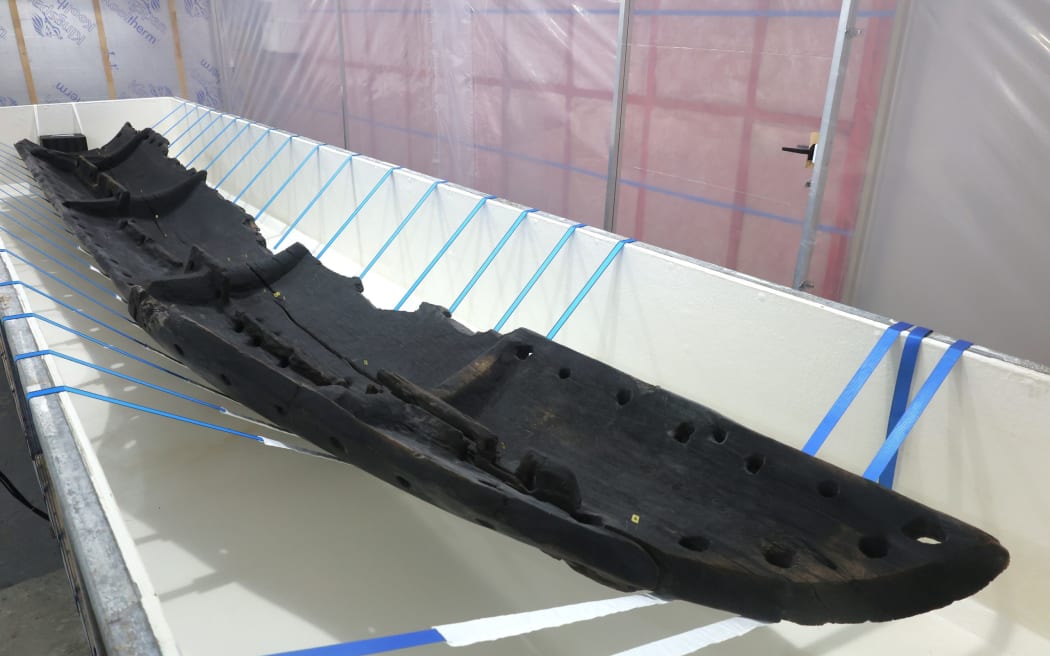
Efforts are advancing to establish a dedicated home for Aotearoa’s “most significant archaeological find,” the Anaweka waka, in the town of Tākaka. Discovered 13 years ago by a family on a picnic, this ancient artefact is a 700-year-old fragment of a double-hulled ocean-going canoe. Currently preserved in a polyethylene glycol solution, the waka is set to finish drying by the end of this year, paving the way for its display in a new facility.
The local iwi—Te Ātiawa, Ngāti Rārua, and Ngāti Tama—along with Ngāti Kuia, have collaborated to develop a plan for a purpose-built wharewaka, to be located next to the Golden Bay Museum at the intersection of Commercial and Reilly Streets. This land, which currently houses Pioneer Park, is already designated for museum use. Last month, the Tasman District Council approved the proposed location in principle, pending public consultation.
Butch Little, chair of the Ngāti Tama ki Te Waipounamu Trust, highlighted the collaborative spirit of local stakeholders, including the council and community families. He emphasized the importance of a consultation process with the community before moving forward with funding, which is expected to be significant.
“This wharewaka will properly recognize the mana of what has been described as the country’s ‘most significant archaeological find ever’,” Little stated. He envisions the facility as not only a display for the waka but also as an educational space dedicated to the history of local Māori and their knowledge of celestial navigation and canoe construction.
The project aims to offer more than just a static display. Little expressed a vision that includes storytelling, showcasing other artefacts, and educating visitors about the history of voyaging. “We’re looking for something that the community can be really proud of and also in awe of,” he said.
Once completed, the wharewaka is expected to attract international visitors, contributing to the already thriving waka tourism in the Abel Tasman region. “There will be people coming to the Bay just to see that, that will be their sole purpose,” Little noted, emphasizing its potential to bring in visitors who might not have otherwise considered the area.
The Golden Bay Museum sees the addition of the wharewaka as a significant opportunity. Frank Susko, chair of the museum board, described it as a “real honour,” noting it would enhance the historical narrative of Golden Bay, particularly concerning early encounters between Māori and Europeans.
“It’ll really be a huge boost to history, to let people know what a big historical significance Golden Bay has with the waka,”
said Susko.
The museum’s services manager, Karen Johnson, added that the museum currently houses many Māori artefacts, with only a small portion on display. The wharewaka would allow for more of these taonga to be exhibited, enriching the cultural experience for visitors.
While the site has been agreed upon in principle, there remains considerable work ahead before construction can begin, including further analysis, design, fundraising, and community consultation. Little reiterated the intention to do the project properly, ensuring it resonates with the community’s heritage.
“We want to do it properly, we want to make it relevant in terms of what else was shown in there,” he said. “The whole community will be able to celebrate that. ‘Wow, this was found here.’ It will be the talk of the town for a long time once it’s up and running.”
The Anaweka waka is a rare find, being only the second known Polynesian ocean-voyaging canoe to survive into modern times. The first was discovered in 1978 on the island of Huahine in French Polynesia, while fragments of a potential third canoe were recently uncovered on the Chatham Islands.
Politics
Invercargill Prison Continues Controversial Use of Dry Cells
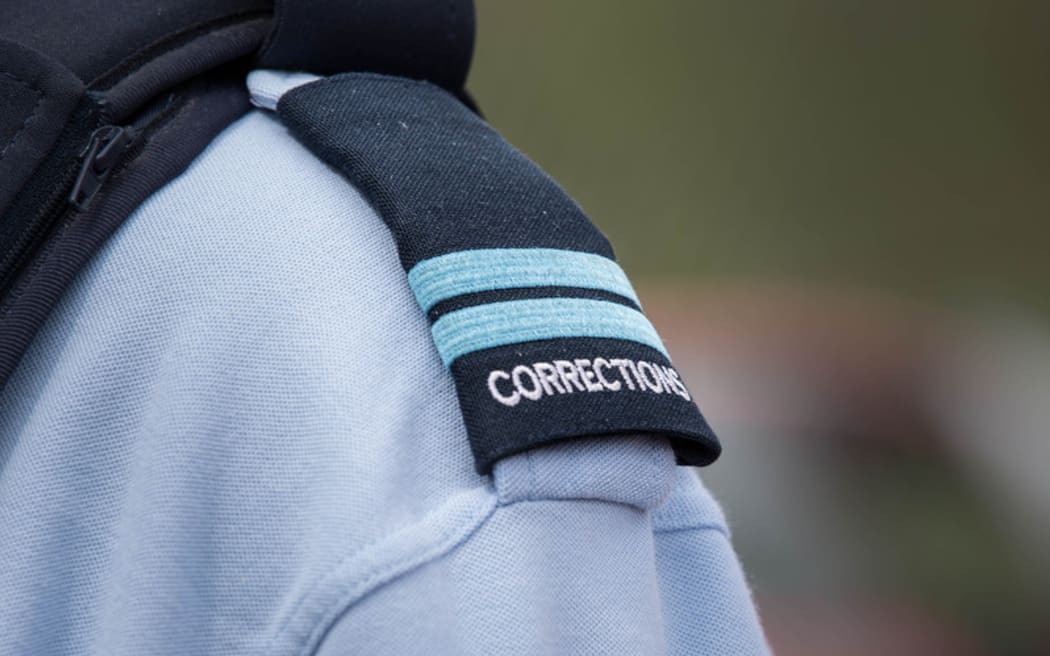
Prisoners at Invercargill Prison who are deemed at-risk continue to be placed in dry cells—rooms devoid of toilets and drinking water—despite prior condemnation of this practice by authorities. A report from 2019 by then-Chief Ombudsman Peter Boshier revealed that such conditions violated United Nations standards aimed at protecting the dignity of prisoners. Since that report, data obtained under the Official Information Act indicates that at-risk inmates have been placed in these dry cells at least 14 times, with the majority of incidents occurring in 2023.
The dry cells are part of the prison’s Intervention and Support Unit (ISU) and are primarily intended for monitoring inmates suspected of concealing contraband. While the Department of Corrections maintains that at-risk prisoners are usually placed in designated “safer cells”—rooms lacking ligature points for enhanced monitoring—officials admitted that overcrowding often necessitates the use of dry cells. According to Neil Beales, Deputy Commissioner for Men’s Prisons, “We still have a responsibility to make sure that that person is properly looked after.”
On 13 occasions since 2019, inmates identified as at-risk were housed in dry cells due to the unavailability of safer cells. These cells are designed for close monitoring and provide access to specialized care, but as noted by Beales, “When you’re stuck with nowhere else to put them that is safe… they have to make the best decisions for safety.”
Continued Warnings from Oversight Bodies
Multiple oversight organizations have repeatedly raised concerns regarding the use of dry cells for at-risk inmates. During a visit in 2019, Boshier found that the three safer cells at Invercargill Prison were occupied, leading to two at-risk prisoners being confined to dry cells. This situation led Boshier to identify a breach of Rule 15 of the UN Standard Minimum Rules for the Treatment of Prisoners, which mandates adequate sanitary facilities.
In 2021, Boshier reiterated his concerns about the practice at other facilities, stating, “Dry cells are a desolate and barren environment for prisoners who are already vulnerable.” In a more recent report in 2023, Chief Inspector of Corrections Janis Adair expressed similar sentiments, emphasizing that the use of dry cells for purposes beyond their intended design is inappropriate.
Calls for Systemic Change from Advocacy Groups
Advocacy organizations have criticized the ongoing use of dry cells, labeling the situation as “inhumane” and an “utter failure” of the justice system. Lisa Woods, Advocacy and Movement Building Director at Amnesty International New Zealand, conveyed the gravity of the situation, stating, “People being placed in such conditions… it’s beyond appalling.” Woods highlighted that the repeated violations of international human rights standards reflect a systemic issue that undermines the dignity of those in custody.
Former inmate and spokesperson for the Howard League for Penal Reform, Cosmo Jeffery, also condemned the practice, recalling his own experience in a dry cell. He asserted, “It’s totally inhumane. It’s going back to the dark ages.” Jeffery criticized the lack of effective action to prevent the continued use of these cells, questioning the absence of motivation for reform.
Challenges in Prison Capacity and Mental Health Care
Invercargill Prison has seen its population fluctuate between 110 and 182 inmates since 2019, including a notable increase in those with significant mental health issues. Beales acknowledged the challenges faced by staff amid rising demand. “I know that our managers at those sites will do everything in their power not to use those cells,” he said, emphasizing the dilemma of ensuring safety for both inmates and staff.
When questioned about the lack of expansion of ISU safer cells at Invercargill, Beales cited the age and condition of the facility as a reason for prioritizing resources elsewhere in the prison network. In October 2023, the Department of Corrections opened 500 new high-security beds at Waikeria Prison along with 96 dedicated mental health and addiction beds, aiming to alleviate pressure on facilities across the system.
As the debate continues regarding the treatment of at-risk inmates, the future use of dry cells at Invercargill Prison remains uncertain, contingent on capacity and availability of safer alternatives. The ongoing scrutiny from both watchdogs and advocacy groups underscores the urgent need for reforms in how vulnerable prisoners are managed within the correctional system.
Politics
Invercargill Prison Continues Dry Cell Use for At-Risk Inmates
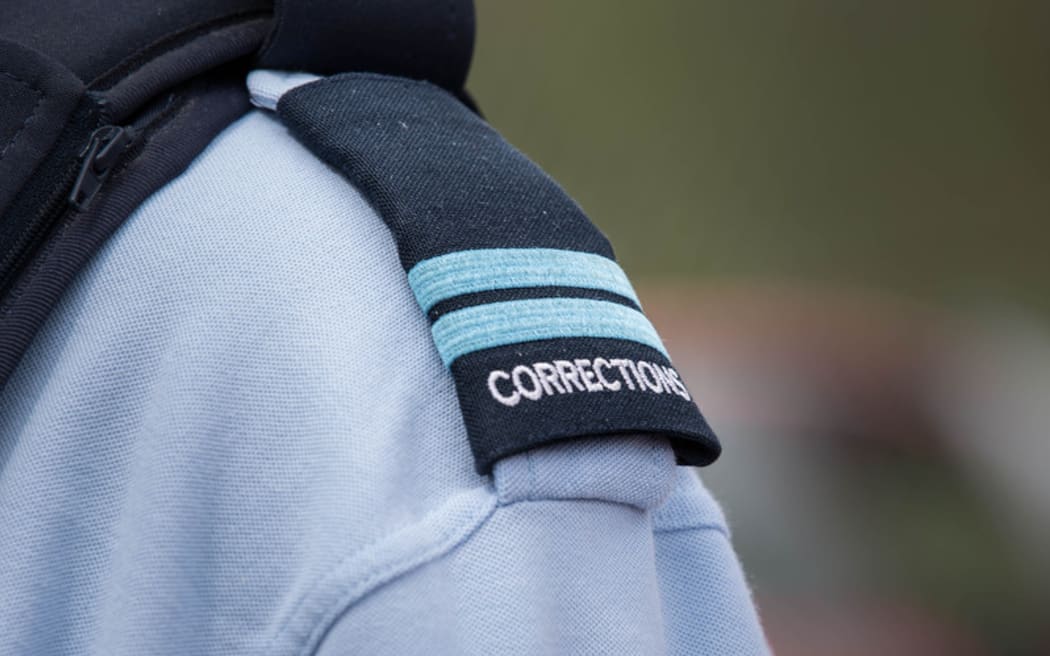
The practice of placing at-risk inmates in dry cells at Invercargill Prison has persisted, despite previous condemnation from officials and human rights organizations. Inmates identified as suicidal have been subjected to this treatment at least 14 times since March 2019, according to data obtained under the Official Information Act.
Dry cells, located within the prison’s Intervention and Support Unit (ISU), are designed primarily for monitoring prisoners suspected of concealing contraband. These cells lack basic amenities, including toilets and drinking water. Following an investigation by then-Chief Ombudsman Peter Boshier, it was determined that this practice breaches United Nations standards aimed at preventing inhumane treatment of prisoners.
While Corrections officials state that at-risk inmates are usually placed in ‘safer cells’—which are equipped to minimize ligature points for self-harm—the data shows that on 13 occasions since 2019, the safer cells were occupied, leaving staff with no choice but to use dry cells. Neil Beales, Deputy Commissioner for Men’s Prisons, explained that the safety of inmates must be prioritized, stating, “Nobody is saying that is optimal and preferable, but unfortunately it’s unavoidable in those circumstances.”
The situation has drawn criticism from various watchdogs. During his visit to Invercargill Prison, Boshier noted that inmates were provided with cardboard receptacles instead of toilets, a clear violation of Rule 15 of the UN Standard Minimum Rules for the Treatment of Prisoners. This rule mandates that prisoners have access to adequate sanitary facilities.
In 2021, Boshier reiterated his concerns regarding the use of dry cells in other prisons, describing them as “desolate and barren.” He emphasized that placing at-risk individuals in such conditions is never appropriate. In 2023, the Office of the Inspectorate echoed these concerns, with Chief Inspector Janis Adair highlighting that dry cells were sometimes used beyond their intended purpose due to a lack of adequate at-risk cells.
Advocacy groups have been vocal in their condemnation of the continued use of dry cells. Lisa Woods, the advocacy and movement building director for Amnesty International New Zealand, characterized the situation as an “utter failure” and a breach of international human rights standards. “This shows the system is utterly broken,” Woods asserted, emphasizing that every individual has the right to dignity, which is consistently being undermined.
Additionally, Cosmo Jeffery, spokesperson for the Howard League for Penal Reform, who experienced time in a dry cell himself, described the conditions as “totally inhumane.” He questioned the lack of progress in addressing this issue, suggesting that there is no real desire for change within the system.
The fluctuating population at Invercargill Prison, which has ranged between 110 and 182 inmates, has contributed to the ongoing challenges. Beales acknowledged that there has been an increase in inmates arriving with significant mental health, drug, and alcohol issues. He expressed the difficulty in managing these cases, stating that the aim is to ensure safety for both inmates and staff.
When questioned about the lack of additional safer cells within the prison, Beales explained that resource allocation has focused on other areas of the prison network. Recently, Corrections opened 500 new high-security beds at Waikeria Prison and 96 dedicated mental health and addiction beds, indicating a strategy to relieve pressure on the system.
While the future of dry cells remains uncertain, Beales noted that their use for at-risk inmates will depend on available capacity. The ongoing use of these facilities raises significant ethical and human rights concerns that demand attention from both the public and authorities responsible for prison management.
-

 Politics2 weeks ago
Politics2 weeks agoDavid Seymour Proposes Fast-Track Law for New Supermarkets in NZ
-

 Top Stories2 weeks ago
Top Stories2 weeks agoTragic Crash Claims Three Lives on Masters Rd Near Waiuku
-

 Entertainment2 weeks ago
Entertainment2 weeks agoGeorge Calombaris Opens Up About Alcohol Struggles After Scandals
-

 World2 weeks ago
World2 weeks agoDaughter Accused of Murdering Mother in Khandallah Home
-

 World2 weeks ago
World2 weeks agoCoalition Leaders Address UN Rapporteur’s Criticism, Clarify Response
-

 Top Stories2 weeks ago
Top Stories2 weeks agoTauranga Airline Suspended After Safety Concerns Arise
-

 World2 weeks ago
World2 weeks agoKalyn Ponga Explores Future Options Amid Newcastle Knights Struggles
-

 World2 weeks ago
World2 weeks agoDriver High on Magic Mushrooms Crashes with Child in Car
-
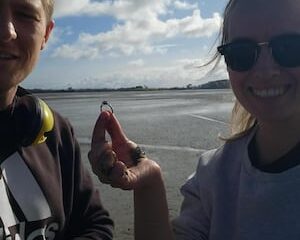
 Health2 weeks ago
Health2 weeks agoWoman’s Missing Engagement Ring Found in Waiuku Mudflats
-
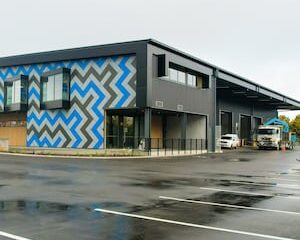
 Business2 weeks ago
Business2 weeks agoSouth Waikato Trades Training Centre Faces Closure Proposal
-

 Top Stories2 weeks ago
Top Stories2 weeks agoBlues Consider Move to Mt Smart in Search of Better Attendance
-

 World2 weeks ago
World2 weeks agoQueenstown’s The Rees Hotel Fined $22,000 for Illegal Crayfish Sales















